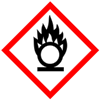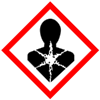Sodium Nitrite Manufacturers, SDS MSDS Sheet |
| Mubychem Limited of USA & India is a pioneer manufacturers suppliers exporters & importers of chemicals including Hydraulic fracturing stimulation & oil well production chemicals, Pharmaceutical excipients, Fragrance & flavor chemicals. Muby Chem Ltd has several manufacturing facilities and toll manufacturers across the globe. We have offices warehouses and representatives in Houston & Midland Texas and Chicago Illinois USA. |
| Our suppliers have accreditations like FDA - GMP-GLP approval, ISO-9001, ISO-22000 HACCP, Kosher & Halal Certification. We offer Commercial Pure Pharmacopoeia Analytical Reagent & Food Grade of Chemicals and do Toll Manufacturing for Oil well drilling fracking fracturing and others. |
Specifications of Sodium Nitrite and Sodiium Nitrate from Manufacturers
Sodium Nitrite BP USP IP ACS Analytical Reagent FCC Grade Manufacturers
Sodium Nitrite SDS MSDS Sheet, Material Safety Data Sheet
1. Product Identification
Synonyms: Sodium Nitrate; Chile saltpeter; soda niter; Sodium
saltpeter; Nitric acid sodium salt; Nitratine.
CAS No.: 7631-99-4
Molecular Weight: 84.99
Chemical Formula: NaNO3
2. Hazards Identification
GHS, Globally Harmonized System Classification in accordance with 29 CFR 1910


Signal Word: Danger
Hazard Statements:
H272: May intensify fire; oxidizer.
H302: Harmful if swallowed.
H315: Causes skin irritation.
H320: Causes eye irritation.
H335: May cause respiratory irritation.
H402: Harmful to aquatic life.
Precautionary Statements
P221: Take any precaution to avoid mixing with combustibles.
P260: Do not breathe dust/fume/gas/mist/vapors/spray.
P264 Wash thoroughly after handling.
P270 Do not eat, drink or smoke when using this product.
P273: Avoid release to the environment.
P280 Wear protective gloves/protective clothing/eye protection/face
protection.
P301+P330+P331 IF SWALLOWED: rinse mouth. Do NOT induce vomiting.
P303+P361+P353 IF ON SKIN (or hair): Remove/Take off immediately all
contaminated clothing. Rinse skin with water/shower.
P304+P340 IF INHALED: Remove victim to fresh air and keep at rest in a
position comfortable for breathing.
P305+P351+P338: IF IN EYES: Rinse cautiously with water for several minutes.
Remove contact lenses, if present and easy to do. Continue rinsing.
P310 Immediately call a POISON CENTER or doctor/physician.
P337+P313 If eye irritation persists: Get medical advice/ attention.
P342+P311 If experiencing respiratory symptoms: Call a POISON CENTER or
doctor/physician.
P363 Wash contaminated clothing before reuse.
P501 Dispose of contents/container in accordance with
local/regional/national/international regulations.
Emergency Overview
DANGER! STRONG OXIDIZER. CONTACT WITH OTHER MATERIAL MAY CAUSE FIRE.
HARMFUL IF SWALLOWED OR INHALED. MAY CAUSE IRRITATION TO SKIN, EYES, AND
RESPIRATORY TRACT.
OSHA Hazards: Harmful by ingestion, Oxidizer.
3. Composition/Information on Ingredients
Ingredient: Sodium Nitrate
CAS No.: 7631-99-4
4. First Aid Measures
Always seek medical attention after first aid measures are provided.
Inhalation: Remove to fresh air. If not breathing, give artificial
respiration. If breathing is difficult, give oxygen. Get medical attention.
Ingestion: Never give anything by mouth to an unconscious person. Get
medical attention.
Skin Contact: Wipe off excess material from skin then immediately
flush skin with plenty of water for at least 15 minutes. Remove contaminated
clothing and shoes. Get medical attention. Wash clothing before reuse.
Thoroughly clean shoes before reuse.
Eye Contact: Immediately flush eyes with plenty of water for at least
15 minutes, lifting lower and upper eyelids occasionally. Get medical
attention immediately.
Note to Physician: -.
5. Fire Fighting Measures
Flammability of the Product: The product is not flammable but it
is an oxidizer.
Products of Combustion: It emits toxic oxides of carbon and oxides of
nitrogen when heated to decomposition.
Fire: Sodium nitrate is an oxidizer.
Explosion: Slightly explosive in presence of heat.
Fire Extinguishing Media: Water spray. Use means suitable for
extinguishing surrounding fire. Water spray, dry chemical, alcohol foam, or
carbon dioxide.
Special Information In the event of a fire, wear full protective
clothing and NIOSH-approved self-contained breathing apparatus with full
face piece operated in the pressure demand or other positive pressure mode.
At high temperatures or when moistened under fire conditions, it may produce
toxic or irritating fumes.
It may accelerate burning when involved in a fire. Increases the flammability of any combustible material. May ignite Combustibles (wood, paper, clothing, etc.). Flames up when heated to 540 deg. C. Mixture with charcoal ignites on heating. Contact with combustible or organic materials may cause fire.
It will react explosively with hydrocarbons. Interaction of nitrates when heated with amidosulfates (sulfamates) may become explosively violent owing to liberation of dinitrogen oxide and steam. Mixtures of sodium nitrate with powdered aluminum or its oxide were reported to be explosive. Mixtures of sodium nitrate and barium thiocyanate may explode. Mixture with sodium nitrate and powdered antimony explode. Mixture of sodium nitrate and sodium thiosulfate or sodium phosphinate explode.
6. Accidental Release Measures
Small Spill: Avoid dust formation. Avoid breathing dust. Ensure
adequate ventilation. Use appropriate tools to put the spilled solid in a
convenient waste disposal container. Finish cleaning by spreading water on
the contaminated surface and dispose of according to local and regional
authority requirements.
Large Spill: Do not let the product enter drains. Use a shovel to put
the material into a convenient waste disposal container. Finish cleaning by
spreading water on the contaminated surface and allow evacuating through the
sanitary system.
7. Handling and Storage
Do not breathe dust. Wear suitable protective clothing. In case of
insufficient ventilation, wear suitable respiratory equipment.
Avoid contact with skin and eyes. Avoid formation of dust and aerosols. Wash
hands thoroughly after handling. Provide appropriate exhaust ventilation at
places where dust is formed. If you feel unwell, seek medical attention.
Keep in a tightly closed container, stored in a cool, dry,
ventilated area. Protect against physical damage or contact with oxidizing
material and combustible substances.
8. Exposure Controls/Personal Protection
Airborne Exposure Limits: None established.
Ventilation System: A system of local and/or general exhaust is
recommended to keep employee exposures as low as possible. Local exhaust
ventilation is generally preferred because it can control the emissions of
the contaminant at its source, preventing dispersion of it into the general
work area.
Personal Respirators (NIOSH Approved): For conditions of use where
exposure to dust or mist is apparent and engineering controls are not
feasible, a particulate respirator may be worn. For emergencies or instances
where the exposure levels are not known, use a full-face positive-pressure,
air-supplied respirator.
Skin Protection: Wear protective gloves and clean body-covering
clothing.
Eye Protection: Use chemical safety goggles and/or full face shield
where dusting or splashing of solutions is possible. Maintain eye wash
fountain and quick-drench facilities in work area.
Other Control Measures: Maintain good housekeeping in work area. Dust
deposits on floors and other surfaces may pick up moisture and cause the
surfaces to become slippery and present safety hazards. Handle in accordance
with good industrial hygiene and safety practice. Wash hands after handling.
9. Physical and Chemical Properties
Appearance: Sodium nitrate is white crystals or powder or
granules.
Odor: None
Solubility: Readily soluble in water
pH: 6-9 at 1% solution at 25 C (77F)
Density: 2.26 gm/cc
Molecular Weight: 84.99
Molecular Formula: NaNO3
% Volatiles by volume @ 21C (70F): 0
Boiling Point: Decomposes at 380C
Melting Point: 307C
Vapor Density (Air=1): No information found
10. Stability and Reactivity
Stability: Sodium nitrate is stable under ordinary conditions of
use and storage.
Hazardous Decomposition Products: It emits toxic oxides of nitrogen
along with sodium oxide when heated to decomposition.
Hazardous Polymerization: Will not occur.
Incompatibilities: Strong acids, Strong reducing agents, powdered
metals, Organic materials. Avoid all combustible materials and metals.
Contact with barium rhodanide, boron phosphide, cyanides, sodium thiosulfate,
sodium hypophosphite, sulfur plus charcoal, powdered aluminum and aluminum
oxide may cause an explosion.
Conditions to Avoid: Moisture, Heat, Incompatibles.
11. Toxicological Information
Toxicity to Animals:
Oral, rabbit: LD50 = 2680 mg/kg;
Oral, rat: LD50 = 1267 mg/kg;
Carcinogenic Effects: Not a reported carcinogen.
Mutagenic Effects: Mutagenic for bacteria and/or yeast. May cause
damage to blood.
Teratogenic Effects: Not available.
Developmental Toxicity: Not available.
Chronic Effects on Humans: No information found.
Other Toxic Effects on Humans: Hazardous in case of skin contact
(irritant), of ingestion, of inhalation.
Acute Potential Health Effects:
Inhalation: Sodium nitrate causes irritation to the respiratory tract
and mucus membrane.
Ingestion: Harmful if swallowed. May cause irritation to the
gastrointestinal tract.
Skin Contact: Sodium nitrate causes irritation to skin.
Eye Contact: Causes irritation redness and pain.
Chronic Exposure: NA.
12. Ecological Information
Environmental Toxicity:
Toxicity to fish static test LC50 - Gambeson affinis (Mosquito fish) - 6,650
mg/l - 96 h
Fathead minnow: GT 1000 mg/L 96-h LC50; Water flea: GT 1000 mg/L LC50
Toxicity to daphnia and other aquatic invertebrates: EC50 - Daphnia
magna (Water flea) - 6,000 mg/l - 24 h
Environmental Fate: No information found. The product itself and its
products of degradation are not toxic. This chemical is readily
biodegradable and is not likely to bio-concentrate.
13. Disposal Considerations
Whatever cannot be saved for recovery or recycling should be managed in an appropriate and approved waste disposal facility. Processing, use or contamination of this product may change the waste management options. State and local disposal regulations may differ from federal disposal regulations. Dispose of container and unused contents in accordance with federal, state and local requirements. Small amounts of this material may be suitable for sanitary sewer or trash disposal.
14. Transport Information
DOT (USA)
UN-Number: 1498 Class: 5.1 Packing group: III
Proper shipping name: Sodium nitrate
Marine pollutant: No
Poison Inhalation Hazard: No
IMDG
UN-Number: 1498 Class: 5.1 Packing group: III EMS-No: F-A, S-Q
Proper shipping name: Sodium nitrate
Marine pollutant: No
IATA
UN-Number: 1498 Class: 5.1 Packing group: III
Proper shipping name: Sodium nitrate
15. Regulatory Information
USA:
OSHA Hazards: Harmful by ingestion, Oxidizer.
SARA Codes: CAS # 7631-99-4: flammable.
SARA 302: No chemicals in this material are subject to the reporting
requirements of SARA Title III, Section 302.
Section 313:
Sodium nitrate
CAS-No.: 7631-99-4
SARA 311/312 Hazards: Reactivity Hazard, Acute Health Hazard.
Clean Air Act:
This material does not contain any hazardous air pollutants.
This material does not contain any Class 1 Ozone depletors.
This material does not contain any Class 2 Ozone depletors.
Clean Water Act:
None of the chemicals in this product are listed as Hazardous Substances
under the CWA.
None of the chemicals in this product are listed as Priority Pollutants
under the CWA.
None of the chemicals in this product are listed as Toxic Pollutants under
the CWA.
California Prop 65:
This product does not contain any chemicals known to State of California to
cause cancer, birth defects, or any other reproductive harm.
Canada - DSL/NDSL
Canadian WHMIS Classifications: C, D2B
CAS# 7631-99-4 is listed on Canada's DSL List.
This product has a WHMIS classification of C, D2B.
CAS# 7631-99-4 is listed on Canada's Ingredient Disclosure List.
Section 16: Other Information
Disclaimer:
**********************************
Our company provides this Sodium nitrite SDS information sheet contained herein in good faith but makes no representation as to its comprehensiveness or
accuracy. This MSDS sheet is intended only as a guide to the appropriate precautionary handling of the material by a properly trained person using this product.
Individuals receiving the information must exercise their independent judgment in determining its appropriateness for a particular purpose.
**********************************
Suppliers Manufacturers Exporters Importers between USA Canada UAE Europe South Africa Tanzania Kenya Uganda Egypt Nigeria Turkey Mexico Brazil Argentina Chile Dubai China India etc.
Copyright and Usual Disclaimer is Applicable.
If you feed a dog with your hand, it will never bite you. That is the principal difference between a dog and a man.







